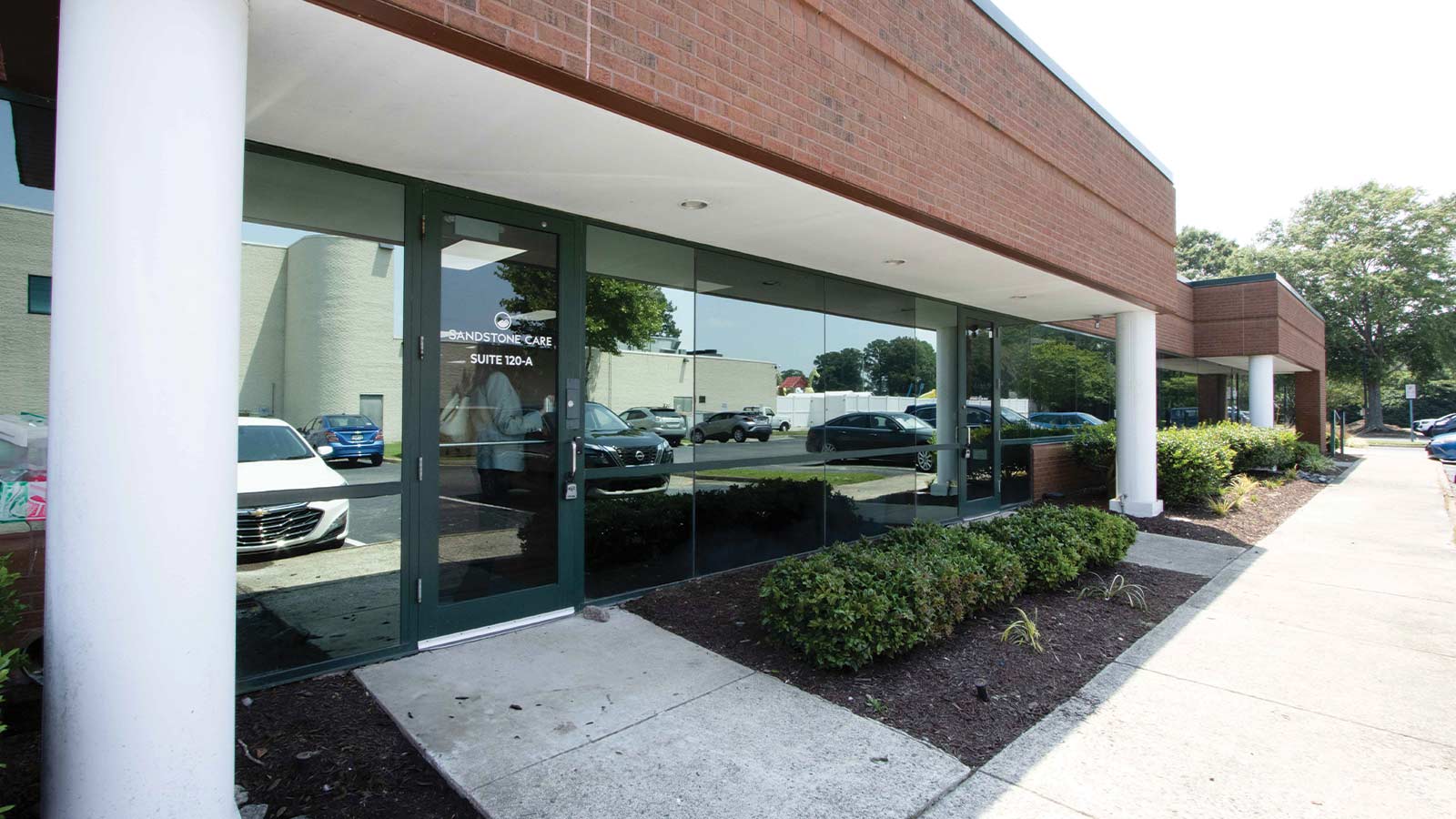Young Adult Cocaine Addiction Treatment, Detox, & Rehab
Addiction can look different for everyone. It is important to reach out for help and voice your concerns if you feel that a loved one is addicted to cocaine.
Substances like cocaine are highly addictive for young adults because their brains are more vulnerable to developing substance use disorders and addiction.
The brain is still going through major development through the mid-twenties. When substances are abused repeatedly over time, they can cause serious alterations and damage to the brain.
Drug use alters the natural chemicals and functions in the brain, causing young people to continue seeking drugs to reproduce its effects.
Common signs and symptoms of young adult cocaine addiction can include:
Sandstone Care provides age specific care for those who struggle with substance use, mental health, and co-occurring disorders. We have treatment centers throughout the United States.
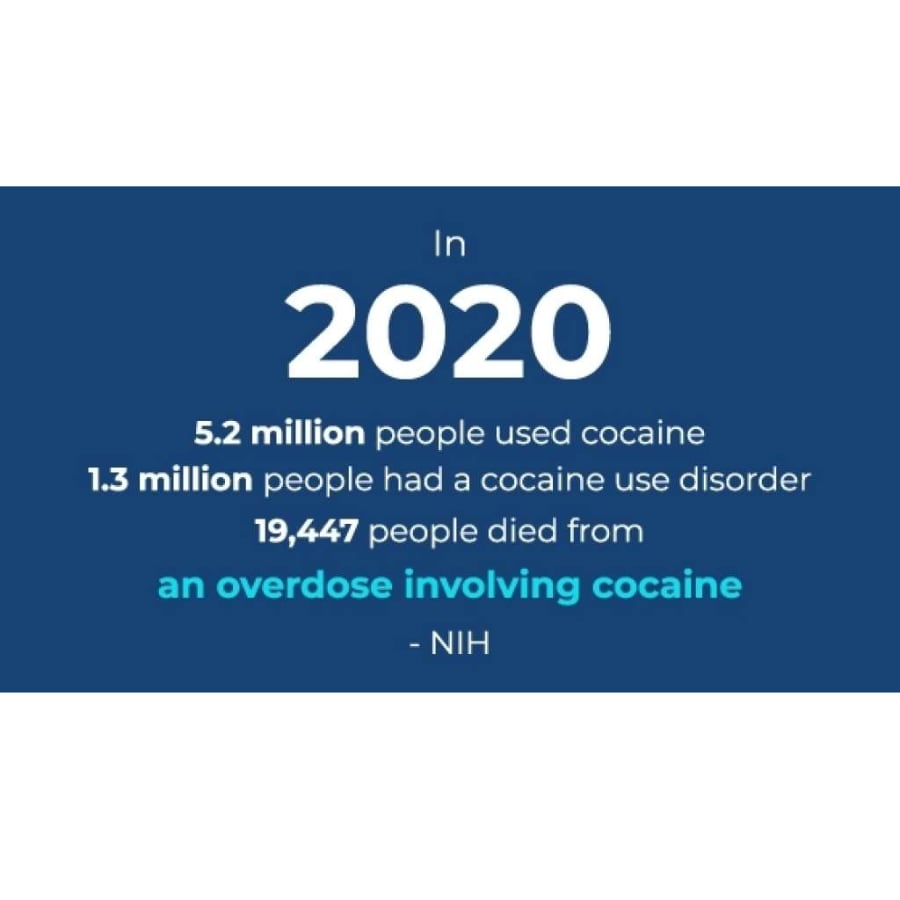
Cocaine is a highly addictive stimulant drug made from the South American native plant coca.
Cocaine is a schedule II drug, meaning it has a high potential for abuse but may be given by a doctor for medical reasons such as local anesthesia for certain surgeries.
Individuals who use cocaine often take the drug repeatedly over a short time, also referred to as binges.
Cocaine use among adolescents and young adults is a significant public health issue because of its high risk for addiction and the negative long and short-term medical and psychological effects.
Cocaine is commonly administered orally, snorted, injected, or smoked.
Cocaine can enter the body by being rubbed into the gums, injected into the veins, or snorted through the nose.
Injecting cocaine through a needle also puts individuals at a higher risk of contracting HIV, hepatitis C, and other bloodborne diseases.
Crack cocaine can be heated in a glass pipe that produces vapors which are then absorbed into the blood through the lungs.
Some people also smoke crack by combining it with marijuana or tobacco and smoking it like a cigarette.
Cocaine is especially dangerous when mixed with other substances because it poses a higher risk of accidental overdose.
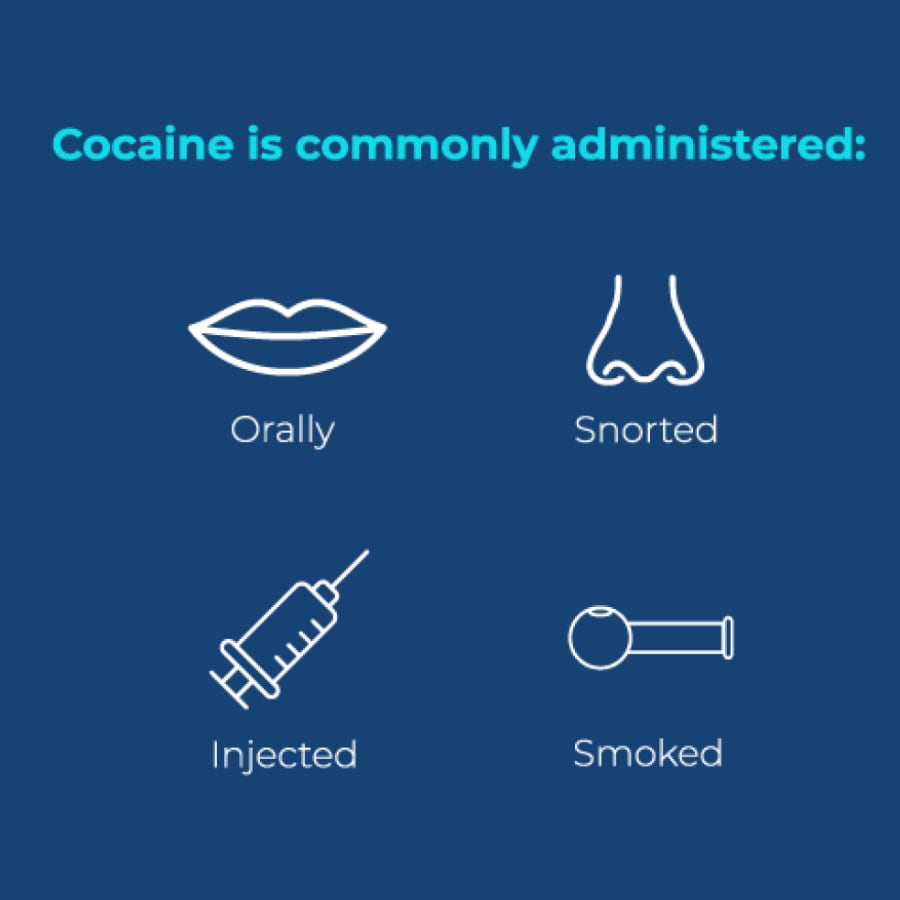
Common short-term side effects of young adult cocaine use can include:
|
|
|
|
|
|
|
|
|
Long-term side effects of cocaine use can also include:
|
|
|
|
|
|
|
|
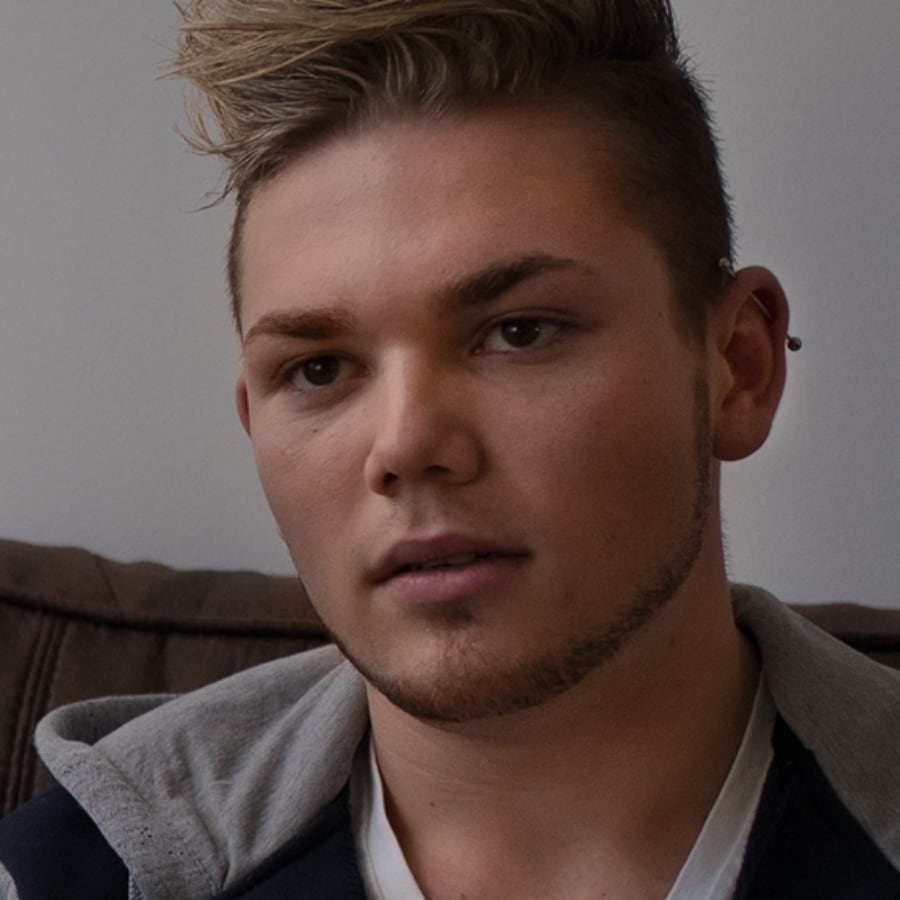

According to World Psychiatry, cocaine use can negatively affect one’s mental health.
Studies show that cocaine use can be associated with higher levels of anxiety, depression, paranoia, and psychoticism.
Substance use and mental health disorders commonly co-occur, especially for teens and young adults whose brains are still developing.
Young adult cocaine use is extremely dangerous and can result in negative health outcomes, addiction, and sometimes fatality.
A person can overdose on cocaine, intentionally or unintentionally.
An overdose happens when someone uses enough of a drug to result in serious negative effects, life-threatening symptoms, or death.
Severe health consequences associated with cocaine overdose can include irregular heart rhythm, heart attacks, seizures, and strokes.
Cocaine may also cause long-term changes in the brain and lead to addiction.
The brain adapts to the high levels of dopamine caused by cocaine use and becomes desensitized over time.
Because of this, people need to take stronger doses to feel “normal” instead of the euphoric “high” they originally felt.

A young adult addicted to cocaine may show significant changes in their physical appearance and behavior.
Someone who snorts cocaine may have white powder on their nose or constantly have a runny nose.
When someone develops a drug addiction, they can have trouble functioning daily. Young adults may start to have problems at work, school, or in relationships.
If you notice your loved one is showing signs of cocaine addiction, it is important to seek professional help right away.
There are some questions you can consider if you think you or your loved one may need to seek cocaine addiction treatment:
Some major risk factors of cocaine addiction can include:
The Continuum of Care
Access a full range of treatments for mental health and substance use disorders. Whether you need a safe transitional living community, inpatient care, or outpatient therapy, we have a program to help.
5-21 days of 24/7 on-site medical supervision.
Our Medically-Assisted Detox and Inpatient Center offers private rooms and 24/7 medically supervised care to support a safe recovery from drugs and alcohol, followed by comprehensive treatment that addresses your physical, psychological, emotional, and spiritual needs.
2-6 Months
Our Transitional Living Program combines the structure of treatment and group living, with the freedom of living away from home.
This level of care is for young adults (18-30) who are not quite ready to heal from home. This level of care provides a safe and supportive living environment integrated with a PHP or IOP level of care. Here, you’ll learn life skills and healthy recovery strategies in an environment that’s set up for your success.
4 weeks of on-site day treatment.
Our Young Adult Day Treatment Program, also known as Partial Hospitalization Program (PHP), is a highly structured level of care for young adults that offers five days of robust programming a week.
Our two distinct mental health and substance use tracks help young adults to stabilize, begin to understand their mental health and/or addiction struggles, and heal from them. We strive to help our clients become more like the person they want to be without using negative coping strategies or substances to get there.
12 weeks of on-site or virtual treatment.
Our Young Adult IOP, or Intensive Outpatient Program, offers two distinct tracks to address young adult needs, each track consisting of 3-4 days of weekly programming.
In our mood disorder track, we are able to focus on mental health, depression, trauma, and anxiety. In our dual diagnosis track, we are able to support young adults with substance use and mental health challenges. Each focuses on developing positive social, academic, and vocational habits while continuing with their job or school responsibilities.
If you or a loved one is struggling with a cocaine addiction, you must reach out for professional help immediately.
Addiction can get worse over time if gone untreated.


A variety of different cocaine addiction treatment programs are available. Sandstone Care is here to support teens and young adults with mental health and substance use disorders.
According to the National Institute on Drug Abuse, a variety of behavioral treatments have shown to be effective in treating cocaine addiction.
Behavioral treatments can help young adults address mental health and substance use problems by identifying negative thought and behavior patterns and building healthy coping mechanisms and habits.
Contingency Management (CM) has proven to be effective in helping individuals with cocaine addiction.
CM programs use tangible rewards and incentives to promote abstinence from cocaine and other drugs.
For example, an individual may be rewarded with a voucher or token that they can redeem for things like movie tickets or dinner when they pass a drug-free urine test.
CM can be helpful for young adults with a cocaine addiction because it can help them engage and stay in treatment and encourage healthy living.


Cognitive-behavioral therapy (CBT) can help young adults identify negative thoughts, feelings, and behaviors and restructure them by learning new skills and concepts.
CBT can help young adults understand and recognize the situations that may be associated with cocaine use so they can learn how to avoid or cope with these situations.
Dialectical behavioral therapy, or DBT, is a form of CBT.
DBT focuses on mindfulness, distress tolerance, emotional regulation, and interpersonal effectiveness.
DBT can help young adults manage difficult emotions by balancing acceptance and change.
DBT can be helpful in addiction recovery because it can help individuals unlearn thought and behavior patterns through healthy exercises and coping skills.
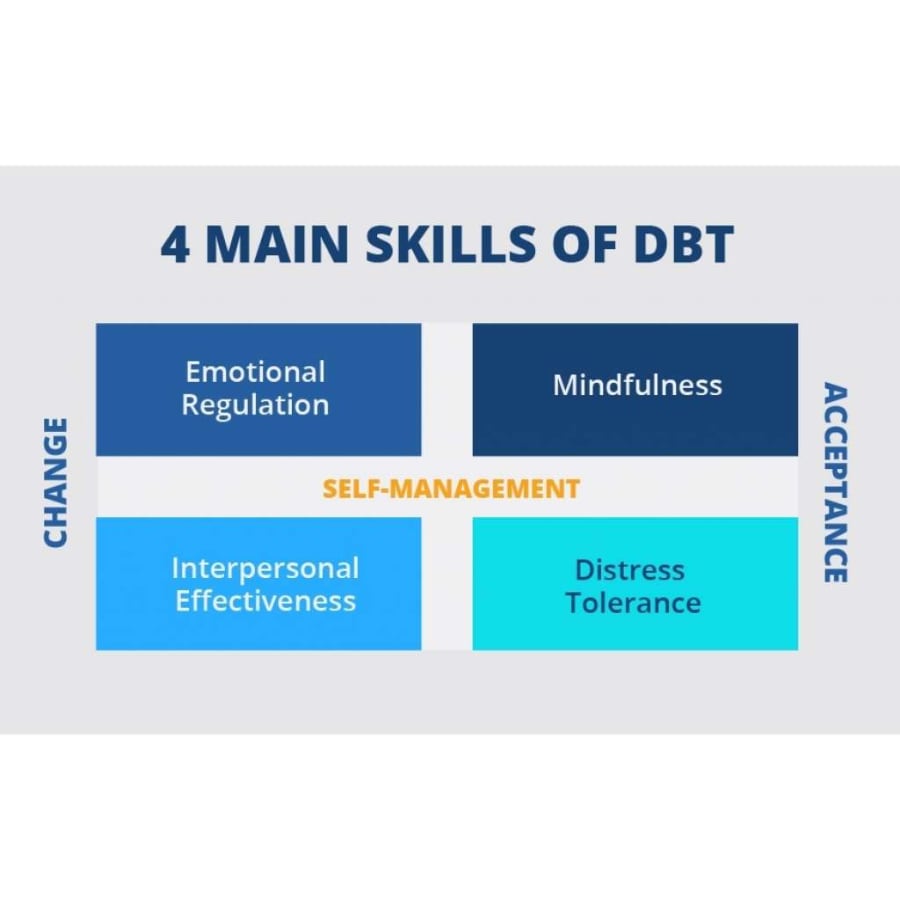

A community-based recovery group, like cocaine anonymous, can help maintain abstinence by using a 12-step program.
Community-based recovery groups can also contribute to building a strong support network and a sense of fellowship by sharing related experiences and struggles.

11820 Parklawn Dr. #403, Rockville, Maryland, 20852
(888) 850-1890
